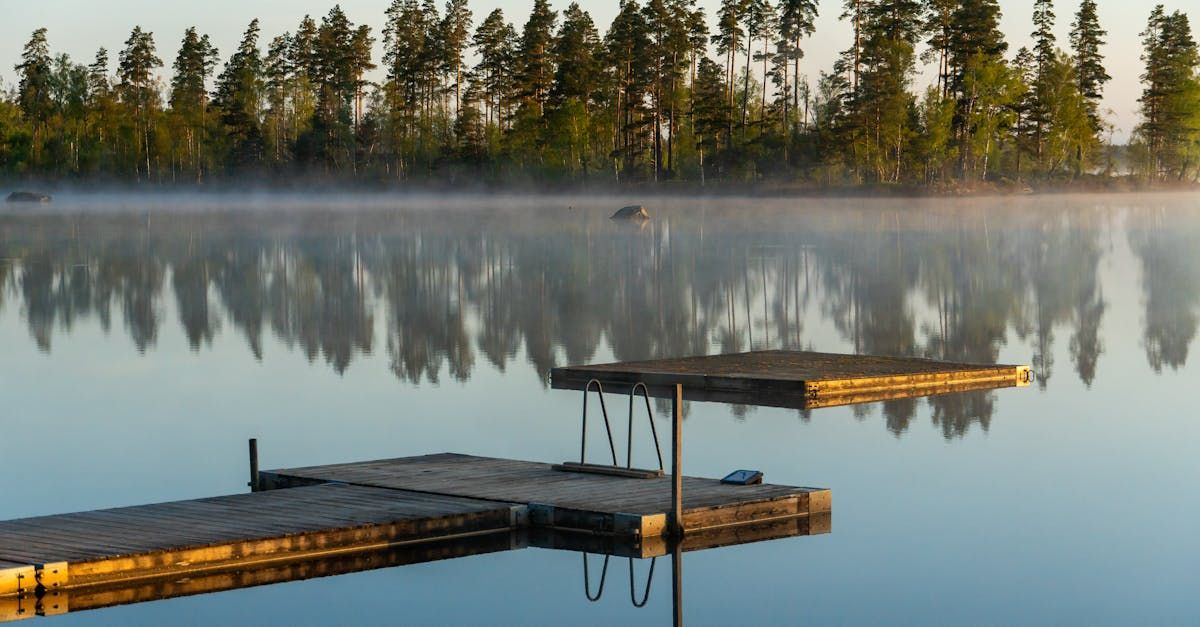Best Dock Decking Materials: Durability Meets Style

Selecting the right dock decking materials is essential for longevity, safety, and aesthetics. This guide will help you understand the different materials available, their benefits, and which might be the best fit for your waterfront project.
Key Takeaway
Wood Decking: Traditional, offers natural beauty but requires maintenance. - Composite Decking: Low-maintenance, durable, and eco-friendly.
PVC Decking: Resistant to moisture and harsh weather, perfect for marine environments.
Aluminum Decking at Home DepotAluminum Decking at Lowe's: Extremely durable, low-maintenance, and lightweight.
ThruFlow Decking: Excellent for water drainage, reducing surface heat, and slip resistance.
Understanding Dock Decking Materials
Wood Decking
Wood has been a traditional choice for dock decking due to its natural beauty and ease of customization. Common types of wood used include:
- Pressure-Treated Pine: Affordable but requires regular maintenance to prevent warping and splintering.
- Cedar: Naturally resistant to rot and insects, but still needs sealing and staining.
- Redwood: Durable and aesthetically pleasing, but can be costlier.
- Ipe: A hardwood known for its strength and longevity, though it can be expensive and hard to work with.
Pros and Cons of Wood Decking
Pros Cons
- Natural aesthetics Requires regular maintenance
- Easy to customize Susceptible to rot and insects
- Affordable options available Can warp or splinter over time
Composite Decking
Composite decking is a popular choice for those who want a low-maintenance option that mimics the appearance of wood. It’s made from a blend of wood fibers and plastic.
- Low Maintenance: Requires minimal upkeep, and doesn't need sanding, staining, or sealing.
- Durable: Resistant to fading, staining, scratching, and mold.
- Eco-Friendly: Often made from recycled materials.
Pros and Cons of Composite Decking
Pros Cons
- Low maintenance Higher upfront cost
- Resistant to weather and wear Can get hot in direct sunlight
- Eco-friendly Limited color choices in some brands
PVC Decking
PVC (Polyvinyl Chloride) decking is another low-maintenance option, known for its durability and resistance to moisture.
- Waterproof: Ideal for marine environments, doesn’t absorb water.
- Resistant to Elements: Won’t rot, warp, or splinter.
- Lightweight: Easy to handle and install.
Pros and Cons of PVC Decking
Pros Cons
- Waterproof
- Can be slippery when wet
- Extremely durable
- Higher cost compared to wood
- Lightweight
- Limited in natural appearance
Aluminum Decking
Aluminum decking is known for its strength, lightweight, and low maintenance.
- Durability: Extremely resistant to weather, rot, and insects.
- Low Maintenance: Doesn’t require painting or sealing.
- Heat Dissipation: Stays cooler in direct sunlight.
Pros and Cons of Aluminum Decking
Pros Cons Long-lasting Higher initial cost Lightweight and strong Can be noisy Low maintenance Limited aesthetic options ThruFlow Decking
ThruFlow decking is a unique solution designed for maximum water drainage and slip resistance.
- Drainage and Ventilation: Allows water to pass through, reducing surface temperature and standing water.
- Slip Resistance: Textured surface for increased safety.
- Durability: Resistant to rot, insects, and UV damage.
Choosing the Right Material for Your Dock
When choosing the right material for your dock, consider the following factors:
Budget
Your budget will significantly impact your choice of decking material. While wood is generally cheaper upfront, it requires more maintenance over time. Composite, PVC, and aluminum have higher initial costs but lower maintenance expenses.
Maintenance
Consider how much time and effort you’re willing to invest in maintaining your dock. If you prefer low-maintenance options, composite, PVC, and aluminum are excellent choices. Wood requires regular upkeep, including sealing, staining, and replacing damaged boards.
Aesthetic Preferences
Your aesthetic preferences will also guide your choice. Wood offers a natural, classic look, while composite and PVC provide a variety of colors and finishes that can mimic wood. Aluminum and ThruFlow have a more modern and industrial appearance.
Environmental Conditions
Think about the environmental conditions your dock will face. If your dock is in a harsh marine environment with high humidity and saltwater exposure, materials like PVC and aluminum, which are resistant to moisture and corrosion, are ideal.
Installation and Longevity
Some materials require specific installation techniques, which might affect your choice if you're planning a DIY project. Additionally, consider the longevity of the material. While wood might need replacing every 10-20 years, materials like composite, PVC, and aluminum can last much longer with less frequent replacement.
Real-Life Experiences and Case Studies
Wooden Dock in Charleston, SC
A homeowner in Charleston chose a pressure-treated pine for their dock due to its affordability. Over the years, they encountered frequent maintenance issues, including warping and splintering. They eventually switched to composite decking to reduce upkeep and enjoy a more durable surface.
Aluminum Dock in Hilton Head, SC
A marina in Hilton Head opted for aluminum decking for its piers due to the heavy foot traffic and harsh weather conditions. The aluminum has proven durable and low maintenance, providing a safe and long-lasting solution for the marina’s needs.
ThruFlow Decking for a Floating Dock
A family on Edisto Island installed ThruFlow decking for their floating dock. The material’s excellent drainage and slip resistance have made it a safe and practical choice, especially for children and pets playing on the dock.
Tips for Dock Decking Materials
- Plan Ahead: Measure your dock area accurately and purchase a little extra material to account for mistakes and future repairs.
- Follow Manufacturer Guidelines: Each material may have specific installation requirements. Follow these to ensure durability and warranty compliance.
- Use Proper Fasteners: Choose corrosion-resistant fasteners, especially for marine environments.
- Consider Expansion and Contraction: Materials like wood and composite can expand and contract with temperature changes. Leave appropriate gaps for this movement.
- Safety First: Wear appropriate safety gear and use proper tools during installation.
Keeping Your Dock Decking in Top Shape
Regular Cleaning
To keep your dock looking its best, regular cleaning is essential. For wood decking, use a mild detergent and a soft brush. For composite, PVC, and aluminum, use a manufacturer-recommended cleaner and a soft brush or cloth.
Inspect for Damage
Regularly inspect your dock for any signs of damage, such as cracks, warping, or loose boards. Promptly address these issues to prevent further damage and ensure safety.
Apply Protective Coatings
For wood decking, applying a sealant or stain can help protect against moisture, UV damage, and pests. Composite and PVC decking may benefit from periodic UV protectant applications, while aluminum decking usually requires no additional coatings.
Replace Damaged Sections
If you find any damaged sections, replace them immediately to maintain the integrity and safety of your dock. Keep some extra decking material on hand for quick repairs.
Key Takeaway
s for Dock Decking Materials
- Wood decking offers natural beauty but requires regular maintenance.
- Composite decking is low-maintenance, durable, and eco-friendly.
- PVC decking is waterproof and perfect for marine environments.
- Aluminum decking provides long-term durability and minimal upkeep.
- ThruFlow decking is excellent for drainage and slip resistance.
By considering your budget, maintenance preferences, aesthetic desires, and environmental conditions, you can choose the best dock decking material for your needs. Whether you prefer the traditional look of wood or the low-maintenance benefits of composite, PVC, aluminum, or ThruFlow, there’s a perfect option for your waterfront project.
Remember, a well-chosen dock decking material can enhance not only the functionality of your dock but also its overall appeal and lifespan.
























































